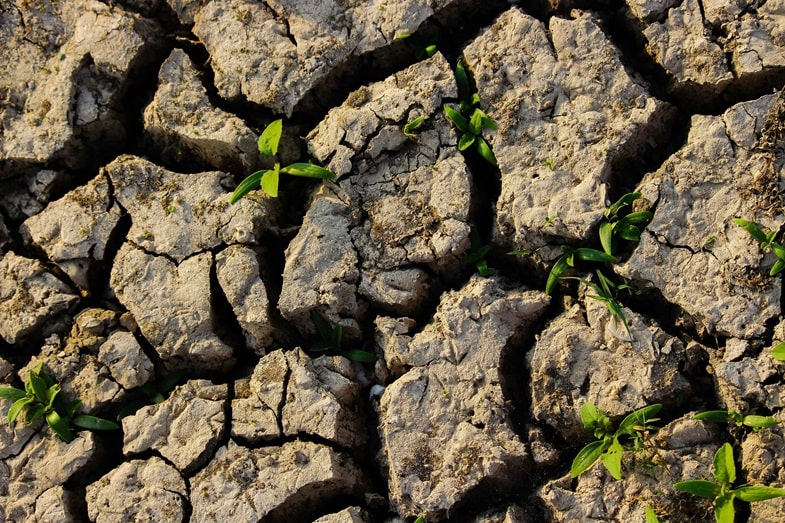Modified on: 22/07/2025
A Step-by-Step Guide to Crafting the Ideal Growing Medium for Healthier Plants and Higher Yields
Choosing the right substrate is one of the most important elements when growing cannabis, as it represents the foundation in which the plant develops its roots, absorbs nutrients and water, and interacts with its environment. A quality substrate directly affects root health, growth rate, and the final yield of the plant.
This article will guide you through the preparation of the ideal substrate for cannabis seeds cultivation, illustrating the main ingredients, correct dosages, and how each element contributes to creating the perfect environment for the success of your cultivation.
Cannabis is a highly adaptable plant and can be grown in different types of soils, but the key to achieving an optimal substrate lies in the right combination of ingredients. Each grower has their own recipe for the perfect mix, but there are some common guidelines that can help you get started on the right foot. In this article, we’ll explore both the basics and the more technical details for creating the best possible substrate for your plants.
What is a substrate and why is it important?
The substrate is the material in which the roots of cannabis plants grow and develop. It can be made up of different components, such as peat, coconut fiber, perlite, vermiculite, compost, and more. The main function of a substrate is to provide structural support, but it also plays a fundamental role in absorbing water and nutrients, managing drainage, and regulating the amount of oxygen reaching the roots.
A good substrate must meet a series of requirements to allow cannabis plants to thrive. These include:
- Aeration: Roots need oxygen to breathe. A substrate that is too compact can limit access to oxygen, leading to problems such as root rot.
- Water retention: While the substrate must retain a certain amount of water, it must also allow excess drainage to prevent the roots from being submerged.
- Nutrient retention: An ideal substrate must be able to hold nutrients until the roots are ready to absorb them.
- pH flexibility: The substrate must have an adequate pH or be easy to adjust to maintain the optimal level for root growth.
With a basic understanding of the functions of a substrate, we can move on to analyzing the individual ingredients and their proportions.
Read also: What to do when cannabis plants don’t grow or when the growth is stunted


Essential Ingredients for Cannabis Substrate
Sphagnum Peat Moss
Sphagnum peat moss is one of the main ingredients in many substrates for cannabis cultivation. Derived from the decomposition of mosses in moist conditions, peat has a high capacity for retaining water and nutrients, while remaining light enough to allow good aeration. Its natural composition also makes it relatively acidic, with a pH ranging between 3.5 and 4.5, so it is often necessary to add amendments such as dolomitic lime to balance the pH.
Recommended dosage: generally, sphagnum peat constitutes 30-50% of the substrate mix.
Coconut Fiber
Coconut fiber is an excellent substitute or complement to peat. Derived from coconut husks, it is a highly sustainable material that offers excellent aeration and drainage properties. Unlike peat, coconut fiber has a nearly neutral pH (5.5-6.5) and a good capacity for retaining water without creating an overly moist environment. Using coconut fiber in the substrate also helps prevent compaction, a problem that can occur with the exclusive use of peat. Additionally, it has the ability to resist decomposition longer than peat, keeping the substrate active for a longer period.
Recommended dosage: for best results, you can mix coconut fiber with sphagnum peat in a ratio of 30-50%, balancing the water retention and aeration properties.
Perlite
Perlite is an essential component for improving substrate aeration. It is an expanded volcanic material that, thanks to its light and porous structure, allows good air circulation and facilitates the drainage of excess water. Adding perlite helps prevent the substrate from becoming too compact, maintaining a light structure that promotes root development. Additionally, perlite is inert, which means it will not affect pH or nutrient availability. Its function is primarily mechanical but essential for maintaining an optimal balance between oxygen and moisture in the substrate.
Recommended dosage: generally, 10-30% of the total mix should consist of perlite, depending on the density of the other components in the substrate.
Vermiculite
Vermiculite is another volcanic material, but with slightly different properties from perlite. While both materials improve aeration, vermiculite has a higher capacity for retaining water and nutrients, making it an excellent addition to substrates that tend to dry out quickly. However, vermiculite retains more water than perlite, so it’s important to find the right balance to avoid water stagnation. Vermiculite is often used in combination with perlite to create a mix that balances water retention and drainage, ensuring that the roots never become too dry or too wet.
Recommended dosage: you can include 10-20% vermiculite in the substrate, depending on the water needs of your plants and the climatic conditions.
Compost
Compost is a natural source of nutrients and beneficial microorganisms for the substrate. It consists of decomposed organic material that enriches the substrate with essential nutrients, including nitrogen, phosphorus, and potassium, which are vital for cannabis growth. Additionally, compost promotes the development of beneficial microfauna that helps improve soil and plant health, supporting more sustainable and organic cultivation. The addition of compost must be carefully dosed, as an excessive amount can negatively affect the structure of the substrate, making it too dense or overly fertile, which could burn the plant’s roots.
Recommended dosage: an addition of 10-20% compost is generally sufficient to provide a balanced nutritional input without compromising the structure of the substrate.
Dolomitic Lime
Dolomitic lime is primarily used to correct the pH of the substrate, especially when using peat, which tends to be acidic. Cannabis thrives in a substrate with a slightly acidic pH, between 6.0 and 6.5, so it’s important to adjust the pH of the substrate mix to ensure that the roots can absorb nutrients effectively. In addition to balancing the pH, dolomitic lime provides calcium and magnesium, two essential nutrients for healthy cannabis plant growth. These elements help strengthen plant cell walls, improving overall robustness and resistance to environmental stress.
Recommended dosage: typically, about 1-2 grams of dolomitic lime per liter of substrate is recommended, depending on the acidity of the base mix.


How to Properly Dose the Ingredients
Achieving the right balance between ingredients is essential for creating a substrate that meets all the needs of the cannabis plant. The most common mistake inexperienced growers make is using a substrate that is too compact or lacks sufficient drainage, which can lead to water stagnation and a lack of oxygen for the roots.
Here is a basic recipe for a balanced substrate:
- 40% sphagnum peat
- 30% coconut fiber
- 10% perlite
- 10% compost
- 5% vermiculite
- 5% dolomitic lime (or other pH corrections)
This mix offers a good balance between water retention, aeration, and nutrient availability and is suitable for both indoor and outdoor cultivation.
Adapting the Substrate to Different Growth Stages
One essential aspect to consider when preparing the substrate is the growth stage of the plant. Nutritional needs and substrate conditions change as the plant develops, requiring adjustments to the growing medium to optimize performance at each phase. During the vegetative phase, for example, cannabis requires a substrate rich in nitrogen to support the rapid development of leaves, stems, and overall plant structure. Nitrogen is critical for photosynthesis, helping the plant produce energy to fuel its growth. A balanced substrate with a higher concentration of nitrogen during this stage ensures the plant has the nutrients needed to build a strong foundation for future flowering.
In contrast, as the plant transitions to the flowering phase, its nutritional demands shift significantly. The focus moves from structural growth to the development of flowers, or buds, which requires increased levels of phosphorus and potassium. Phosphorus promotes healthy root formation and supports the production of large, resinous buds, while potassium plays a key role in enhancing the overall quality and density of the flowers. Adjusting the substrate or supplementing with specific nutrients during this phase is essential to maximize yield and potency. Understanding these changing needs and adapting your substrate accordingly will lead to healthier plants and more abundant, higher-quality harvests.
Read also: What are the growth phases of the cannabis plant?
Conclusion
Preparing the perfect substrate for cannabis cultivation requires attention to detail and a deep understanding of the plant’s needs. By choosing the right ingredients and dosing them correctly, you can create an optimal environment that supports healthy root growth, ensuring high yields and high-quality plants. Experimenting with different combinations of materials will allow you to find the mix that works best for your cultivation method, whether in a greenhouse, indoor, or outdoor setup.
If you’re ready to take your cannabis cultivation to the next level, explore the resources and premium cannabis seeds available at SensorySeeds. Whether you’re a beginner or an experienced grower, our blog offers valuable insights, while providing top-quality seeds to get your grow started right!









